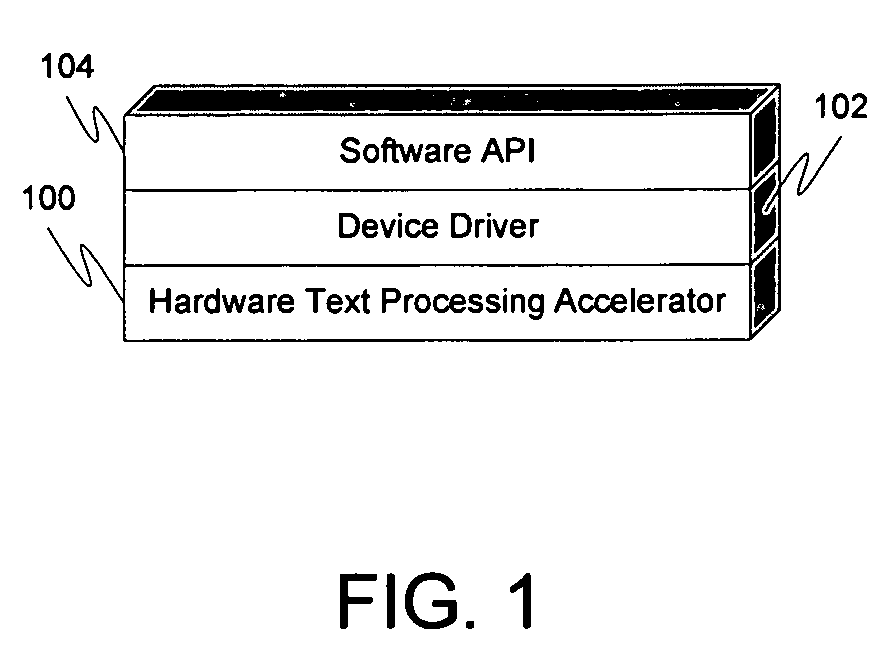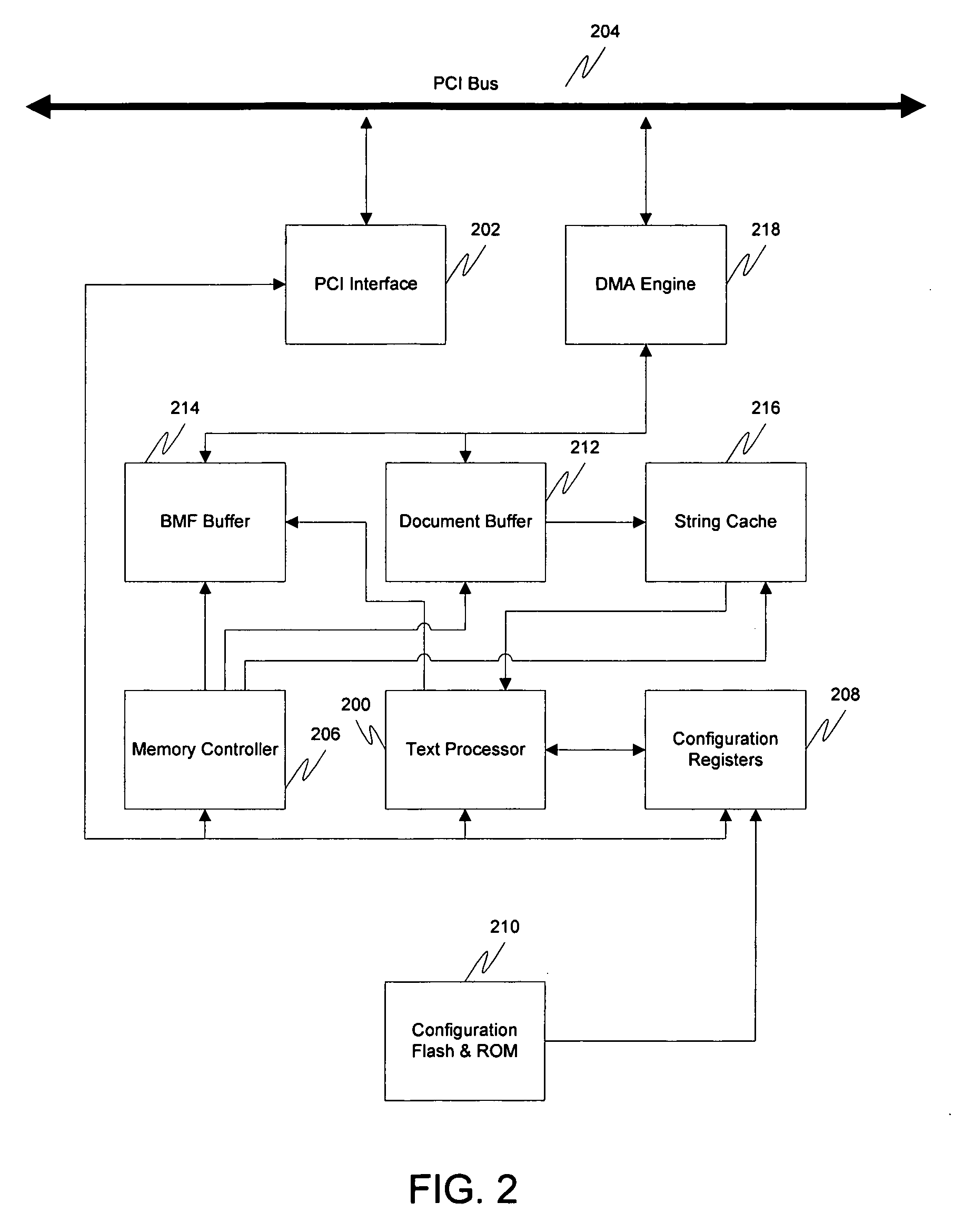Processing structured data
a structured data and processing technology, applied in the field of structured data processing, can solve the problems of xml file processing being very cpu and memory intensive, degrading overall application performance, and many of the same problems as other software-based text-based processing methods
- Summary
- Abstract
- Description
- Claims
- Application Information
AI Technical Summary
Benefits of technology
Problems solved by technology
Method used
Image
Examples
example 1
1>1>2>2>
example 2
1>2>2>1>
[0050]If the ending tags are missing, the corresponding BMF have identical record types
Starting tag for a
Starting tag for b1
Starting tag for b2
[0051]Without ending tags, it will be difficult to determine whether b2 is the sibling, or child, of b2. With ending tags, one can clearly tell the relationship between b1 and b2 in the above examples.
[0052]In Example 1, the token types are:
Starting tag for a
Starting tag for b1
Ending tag for b1
Starting tag for b2
Ending tag for b2
Ending tag for a
[0053]In Example 2, the token types are:
Starting tag for a
Starting tag for b1
Starting tag for b2
Ending tag for b2
Ending tag for b1
Ending tag for a
[0054]To tell whether b1 is a sibling, or child, of b2, one can calculate the depth value of each tags. In example 1, b1 and b2 both have the same depth value so they are siblings. In example 2, b1 and b2 have depth value of 1 and 2 respectively, so b2 is the child of b1.
[0055]When the depth value is included in the BMF records, ending tags can be ign...
PUM
 Login to View More
Login to View More Abstract
Description
Claims
Application Information
 Login to View More
Login to View More - R&D
- Intellectual Property
- Life Sciences
- Materials
- Tech Scout
- Unparalleled Data Quality
- Higher Quality Content
- 60% Fewer Hallucinations
Browse by: Latest US Patents, China's latest patents, Technical Efficacy Thesaurus, Application Domain, Technology Topic, Popular Technical Reports.
© 2025 PatSnap. All rights reserved.Legal|Privacy policy|Modern Slavery Act Transparency Statement|Sitemap|About US| Contact US: help@patsnap.com



